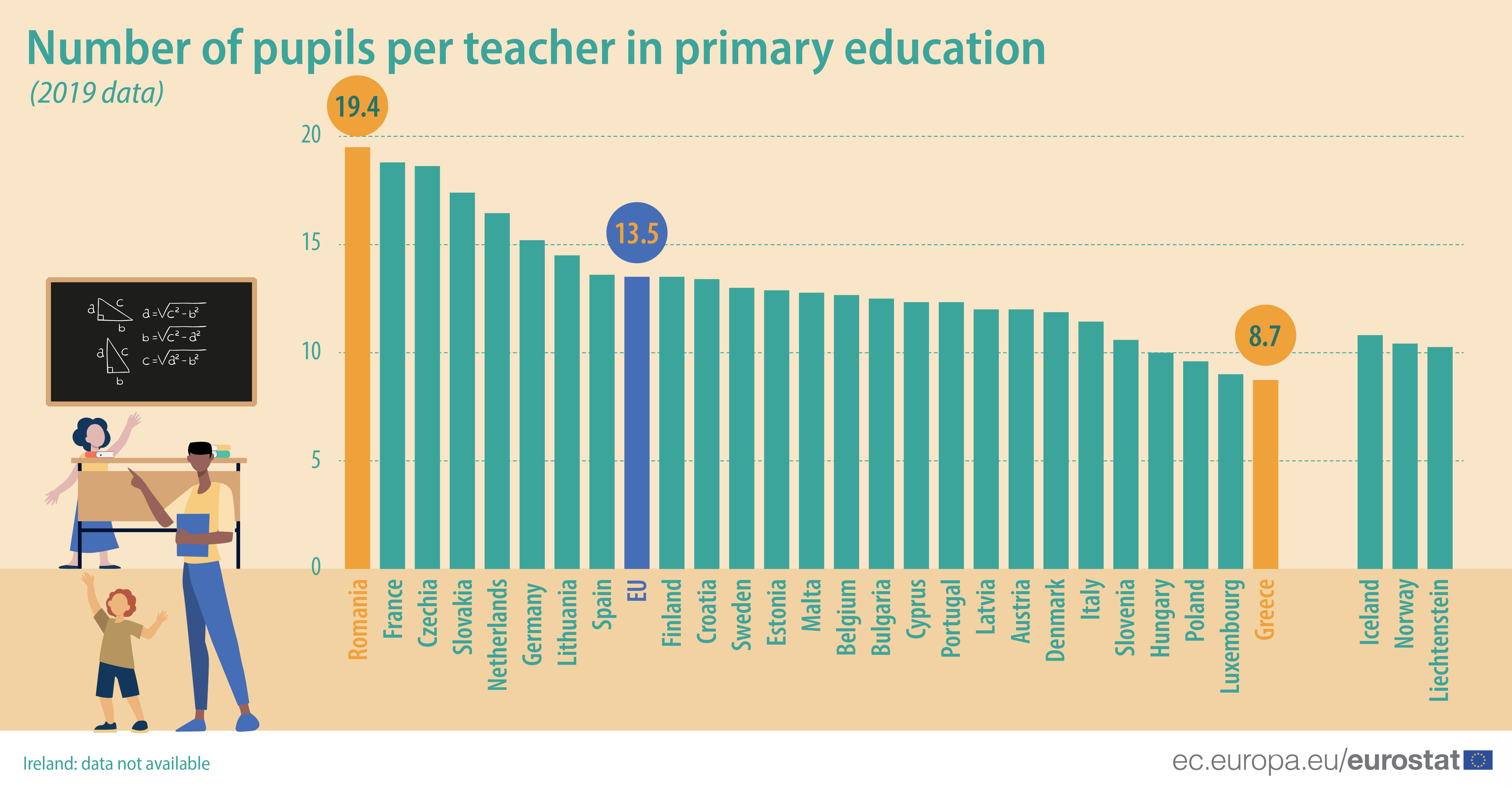In 2019, there were 2.0 million teachers (85% women, 15% men) and 24.5 million pupils at the primary education level in the EU Member States. Children usually enter primary school programmes (classified as ISCED level 1) between the ages of 5 and 7. These programmes are designed to give them a solid basic education in reading, writing and mathematics, along with an elementary understanding of other subjects such as history, geography, natural and social sciences, art and music.
In the EU, the average number of pupils per teacher at the primary level decreased slightly from 13.6 in 2018 to 13.5 in 2019. The lowest ratios were registered in Greece (8.7), Luxembourg (9.0), and Poland (9.6).
On the other end of the spectrum, Romania maintained the highest pupil-teacher ratio (19.4). France and Czechia followed with ratios of 18.8 and 18.7, respectively.
Source dataset: educ_uoe_perp04
The pupil-teacher ratio is calculated by dividing the number of full-time equivalent pupils by the number of full-time equivalent teachers working at ISCED level 1. The pupil-teacher ratio should not be confused with average class size as it does not take into account special cases, like small size groups of pupils with special needs or specific subject areas, or the difference between the number of hours of teaching provided by teachers and the number of hours of instruction prescribed for pupils. To read more about the different levels of education covered by the International Standard Classification of Education (ISCED), please see the ISCED 2011 manual.
For more information:
- Eurostat Statistics Explained articles on education and training
- Eurostat database on education and training
- The source data can be found in Eurostat dataset educ_uoe_perp04 (ratio) and the data on teachers and pupils expressed in full-time equivalent used for the calculation of the ratio in datasets educ_uoe_perp02 and educ_uoe_enra01.
- The number of teachers and pupils can be found in dataset educ_uoe_perp01 and dataset educ_uoe_enrp05.
- Relevant information on the joint UIS (UNESCO Institute of Statistics)/OECD/Eurostat (UOE) data collection and Quality reports compiled at country level can be found in the Education administrative metadata file.
To contact us, please visit our User Support page.
For press queries, please contact our Media Support.


